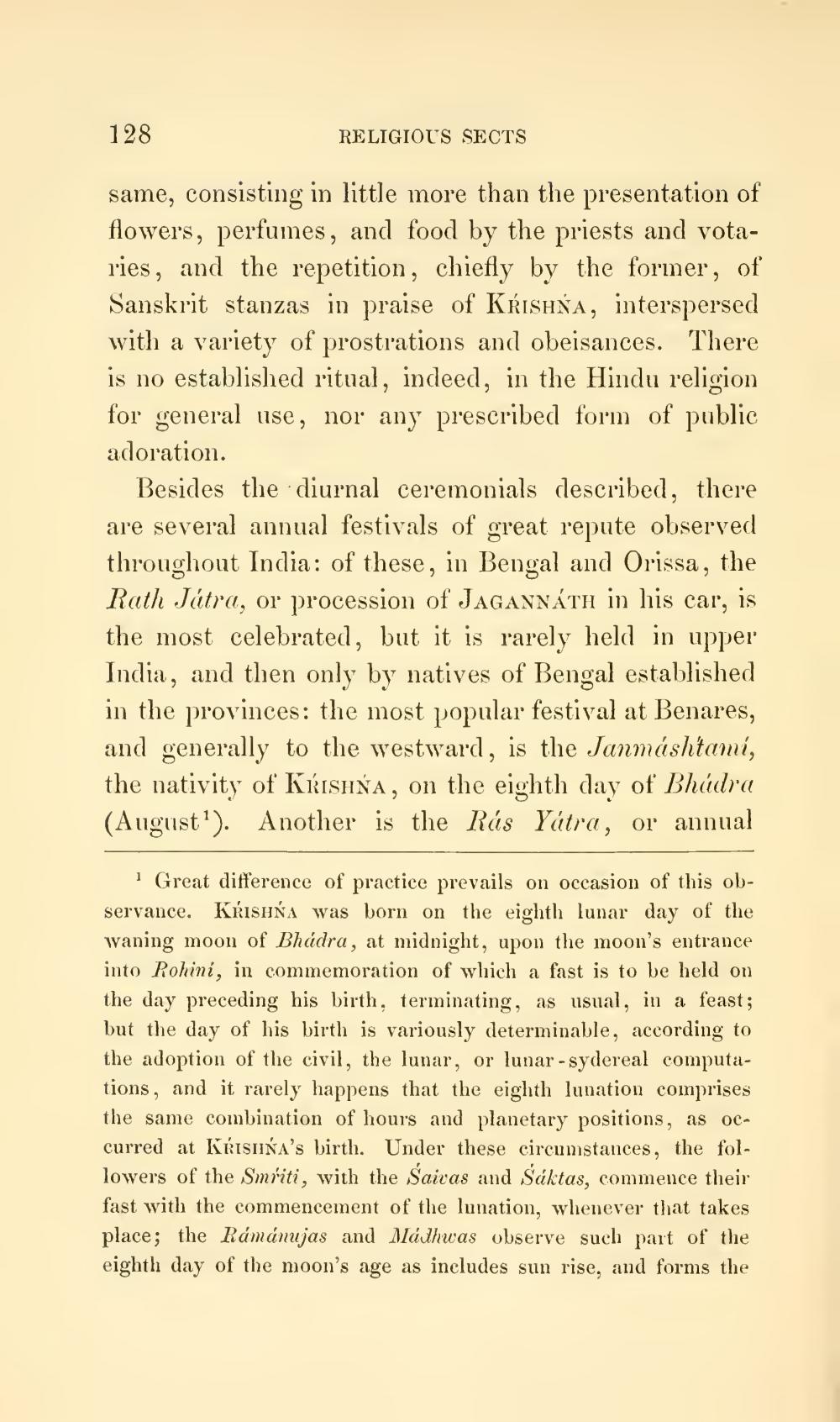________________
128
RELIGIOUS SECTS
same, consisting in little more than the presentation of flowers, perfumes, and food by the priests and votaries, and the repetition, chiefly by the former, of Sanskrit stanzas in praise of KRISHŃA, interspersed with a variety of prostrations and obeisances. There is no established ritual, indeed, in the Hindu religion for general use, nor any prescribed form of public adoration.
Besides the diurnal ceremonials described, there are several annual festivals of great repute observed throughout India: of these, in Bengal and Orissa, the Rath Játra, or procession of JAGANNÁth in his car, is the most celebrated, but it is rarely held in upper India, and then only by natives of Bengal established in the provinces: the most popular festival at Benares, and generally to the westward, is the Janmáshtami, the nativity of KRISHŃA, on the eighth day of Bhudra (August). Another is the Rás Yatra, or annual
i Great difference of practice prevails on occasion of this observance. KŘisuŇA was born on the eighth lunar day of the waning moon of Bhádra, at midnight, upon the moon's entrance into Rohini, in commemoration of which a fast is to be held on the day preceding his birth, terminating, as usual, in a feast; but the day of his birth is variously determinable, according to the adoption of the civil, the lunar, or lunar - sydereal computations, and it rarely happens that the eighth lunation comprises the same combination of hours and planetary positions, as occurred at KåsuŇA's birth. Under these circumstances, the followers of the Smriti, with the Saivas and Saktas, commence their fast with the commencement of the lunation, whenever that takes place; the Rámánujas and Madhwas observe such part of the eighth day of the moon's age as includes sun rise, and forms the




